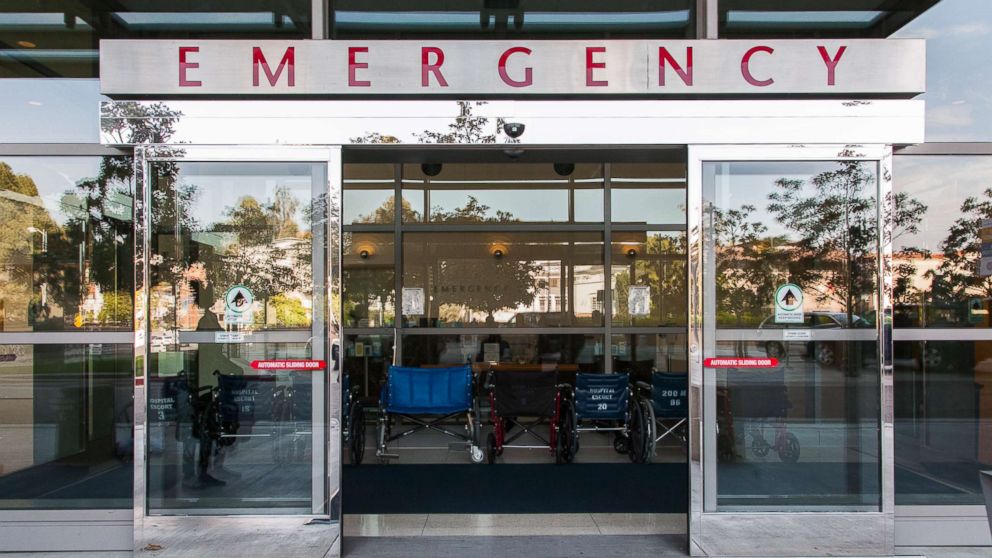ERs often miss chance to send overdose survivors to addiction treatment programs
This story is from Kaiser Health News
The last time heroin landed Marissa Angerer in a Midland, Texas, emergency room — naked and unconscious — was May 2016. But that wasn’t her first drug-related interaction with the health system. Doctors had treated her a number of times before, either for alcohol poisoning or for ailments related to heavy drug use. Though her immediate, acute health issues were addressed in each episode, doctors and nurses never dealt with her underlying illness: addiction.
Angerer, now 36 and in recovery, had been battling substance use disorder since she started drinking alcohol at age 16. She moved onto prescription pain medication after she broke her ankle and then eventually to street opiates like heroin and fentanyl.
Just two months before that 2016 overdose, doctors replaced an infected heart valve, a byproduct of her drug use. She was discharged from the hospital and began using again the next day, leading to a reinfection that ultimately cost her all 10 toes and eight fingers.
“[The hospital] didn’t have any programs or anything to go to,” Angerer said. “It’s nobody’s fault but my own, but it definitely would have been helpful if I didn’t get brushed off.”
This scenario plays out in emergency departments across the country, where the next step — a means to divert addicted patients into treatment — remains elusive, creating a missed opportunity in the health system.
A recent study of Medicaid claims in West Virginia, which has an opioid overdose rate more than three times the national average and the highest death rate from drug overdoses in the country, documented this disconnect.
Researchers analyzed claims for 301 people who had nonfatal overdoses in 2014 and 2015. By examining hospital codes for opioid poisoning, researchers followed the patients’ treatment, seeing if they were billed in the following months for mental health visits, opioid counseling visits or prescriptions for psychiatric and substance abuse medications.
They found that fewer than 10 percent of people in the study received, per month, medications like naltrexone or buprenorphine to treat their substance use disorder. (Methadone is another option to treat substance use, but it isn’t covered by West Virginia Medicaid and wasn’t included in the study.) In the month of the overdose, about 15 percent received mental health counseling. However, on average, in the year after the overdose, that number fell to fewer than 10 percent per month.
“We expected more … especially given the national news about opioid abuse,” said Neel Koyawala, a second-year medical student at Johns Hopkins School of Medicine in Baltimore, and the lead author on the study, which was published last month in the Journal of General Internal Medicine.
It’s an opportunity that’s being missed in emergency rooms everywhere, said Andrew Kolodny, the co-director of Opioid Policy Research at the Heller School for Social Policy and Management at Brandeis University outside Boston.
“There’s a lot of evidence that we’re failing to take advantage of this low-hanging fruit with individuals who have experienced a nonfatal overdose,” Kolodny said. “We should be focusing resources on that population. We should be doing everything we can to get them plugged into treatment.”
He compared it to someone who came into the emergency room with a heart attack. It’s taken for granted that the patient would leave with heart medication and a referral to a cardiac specialist. Similarly, he wants patients who come in with an overdose to start buprenorphine in the hospital and leave with a referral to other forms of treatment.
Kolodny and Koyawala both noted that a lack of training and understanding among health professionals continues to undermine what happens after the overdose patient is stabilized.
“Our colleagues in emergency rooms are not particularly well trained to be able to help people in a situation like this,” said Dr. Margaret Jarvis, the medical director of a residential addiction treatment center in Pennsylvania.
It was clear, Angerer said, that her doctors were not equipped to deal with her addiction. They didn’t know, for instance, what she was talking about when she said she was “dope sick,” feeling ill while she was going through withdrawal.
“They were completely unaware of so much, and it completely blew my mind,” she said.
When she left the hospital after her toe and finger amputations, Angerer recalls her next stop seemed to be a tent city somewhere in Midland, where she feared she would end up dead. Instead, she persuaded her mother to drive her about 300 miles to a treatment facility in Dallas. She had found it on her own.
“There were a lot of times I could have gone down a better path, and I fell through the cracks,” Angerer said.
The bottom line, Jarvis said, is that when a patient comes into the emergency room with an overdose, they’re feeling sick, uncomfortable and “miserable.” But surviving that episode, she emphasized, doesn’t necessarily change their perilous condition.
“Risk for overdose is just as high the day after as the day before an overdose,” said Dr. Matt Christiansen, an assistant professor in the Department of Family & Community Health at the Marshall University Joan C. Edwards School of Medicine in West Virginia.
Kaiser Health News is a nonprofit news service covering health issues. It is an editorially independent program of the Kaiser Family Foundation, which is not affiliated with Kaiser Permanente.




